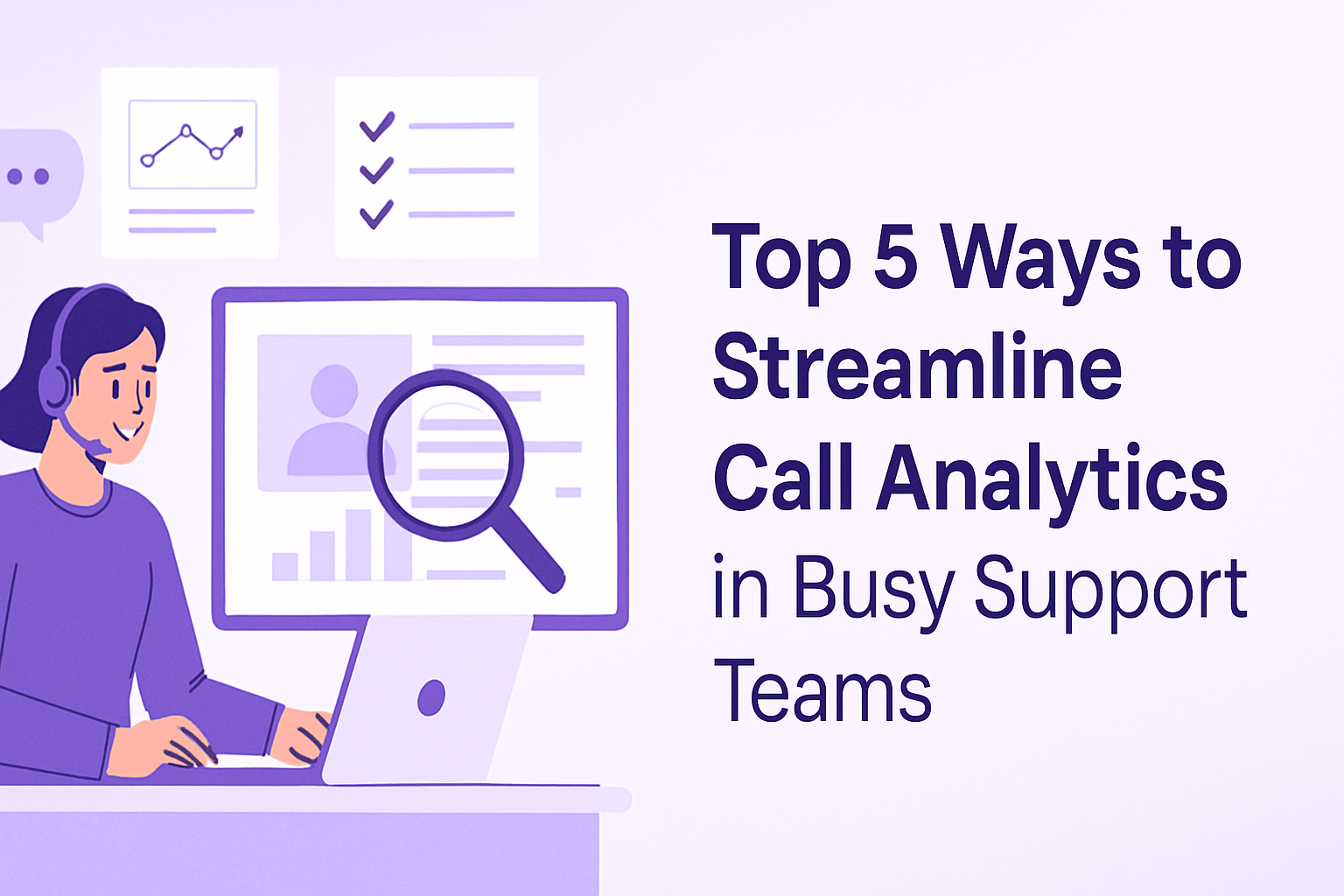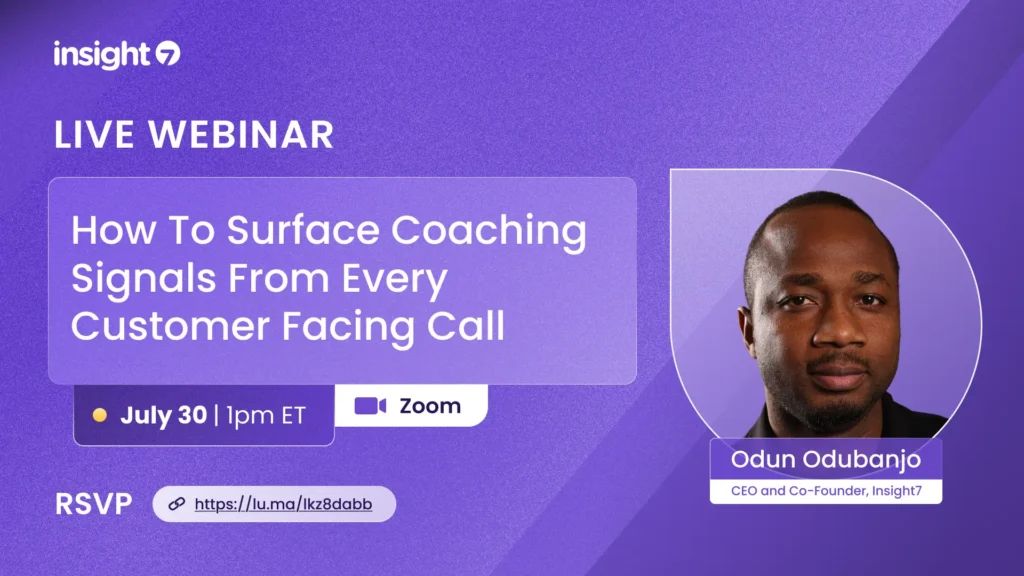When Should Companies Adopt AI-Driven Customer Journey Automation?
-
Hello Insight
- 10 min read
When Should Companies Adopt AI-Driven Customer Journey Automation?
Customer feedback is a treasure trove of insights. Yet, too many companies struggle with harnessing this data effectively. In fact, research shows that 70% of customer interactions go unrecorded, leading to missed opportunities for improvement and innovation. This is particularly true in B2B environments where feedback can be siloed across multiple platforms and sources, making it tedious to analyze manually. So, when should companies consider adopting AI-driven customer journey automation?
Understanding AI-Driven Customer Journey Automation
AI-driven customer journey automation refers to the use of artificial intelligence technologies to streamline and enhance the customer experience across various touchpoints. This approach helps companies analyze customer interactions, understand behavior patterns, and personalize experiences in real-time, ultimately leading to improved customer satisfaction and loyalty.
This topic matters because the modern customer demands seamless and relevant interactions. As customer expectations continue to rise, companies must leverage technology to stay competitive. Without effective automation, organizations risk falling behind in a landscape where personalization is paramount.
Stakeholder Usage:
- Sales Teams (for analyzing customer interactions and improving pitch strategies)
- Customer Success Managers (to enhance customer retention through personalized follow-ups)
- Product Development Teams (for gaining insights into customer pain points and preferences)
- Marketing Departments (to tailor campaigns based on customer behavior and feedback)
- Operational Leaders (for identifying areas of improvement in service delivery)
Value Proposition: AI-driven customer journey automation offers a strategic advantage by transforming raw customer data into actionable insights, enabling companies to make informed decisions and optimize their offerings.
Benefits List: With AI-driven customer journey automation, you can:
- Enhance customer engagement through personalized interactions
- Improve operational efficiency by streamlining processes
- Gain real-time insights into customer behavior and preferences
- Reduce manual analysis time and errors
- Foster a data-driven culture that prioritizes customer satisfaction
Summary Statement: Embracing AI-driven customer journey automation is no longer a luxury; it’s a necessity for companies aiming to thrive in a competitive marketplace.
Key Elements of AI-Driven Customer Journey Automation
Introduction: Implementing AI-driven customer journey automation involves understanding the key elements that contribute to its effectiveness. These components help organizations harness customer data for meaningful insights.
Key Elements List:
- Data Integration: Centralizing customer data from multiple channels (e.g., Salesforce, Gong, Slack, Hubspot) to ensure a comprehensive view of customer interactions.
- Automated Analysis: Utilizing AI tools to analyze customer conversations and feedback, identifying trends and areas for improvement.
- Personalization Algorithms: Implementing algorithms that tailor customer interactions based on historical data and preferences.
- Real-Time Feedback Mechanisms: Establishing systems that provide immediate insights into customer satisfaction and engagement.
- Scalability: Ensuring the automation system can grow with the organization, accommodating increased data volume and complexity.
Connecting Statement: These elements work together to create a robust framework for understanding and enhancing the customer journey, ultimately driving business success.
Impact of AI-Driven Customer Journey Automation
Impact Statement: More than most realize, adopting AI-driven customer journey automation can lead to significant improvements in customer satisfaction and retention, positioning companies to respond proactively to market changes.
Quantified Example: Companies that implement AI-driven customer journey automation can see an increase of up to 30% in customer retention rates and a 25% reduction in customer acquisition costs, according to industry studies.
Common Problems: Without a system for AI-driven customer journey automation, most organizations either:
- Struggle to understand customer needs and preferences
- Miss out on valuable insights due to data silos
- Experience inefficient processes that slow down response times
Solution Benefit: By adopting AI-driven solutions, companies can streamline their operations, making data-driven decisions that enhance customer experiences while saving time and resources.
Bottom Line: The equation is simple: better insights lead to better decisions, which in turn drive customer loyalty and business growth.
Implementation of AI-Driven Customer Journey Automation
Philosophy: The guiding principle for implementing AI-driven customer journey automation should focus on leveraging data to create meaningful customer experiences rather than just automating tasks.
Key Objectives: Companies should aim to achieve:
- A unified view of customer interactions
- Enhanced data analysis capabilities
- Improved customer engagement strategies
Framework Structure: The recommended approach involves several structured steps:
Step 1: Assess Current Capabilities
Evaluate existing customer data collection and analysis practices to identify gaps and opportunities for automation.
Step 2: Define Clear Goals
Establish specific objectives for what the automation system should achieve, such as increasing customer satisfaction scores or reducing response times.
Step 3: Select Appropriate Tools
Choose AI-driven tools that integrate seamlessly with existing platforms, offering robust analytics and reporting capabilities.
Step 4: Train Staff
Equip teams with the necessary knowledge and skills to leverage the new tools effectively, ensuring a smooth transition.
Step 5: Monitor and Iterate
Regularly assess the performance of the automation system, making adjustments based on feedback and evolving customer needs.
Implementation Note: Companies should prioritize tools that offer comprehensive analytics and real-time feedback capabilities to maximize the potential of AI-driven customer journey automation.
Advanced Practices in AI-Driven Customer Journey Automation
Introduction: Top performers in AI-driven customer journey automation often engage in advanced practices that differentiate them from their competitors.
Advanced Components: An advanced approach includes:
- Predictive Analytics: Using machine learning models to anticipate customer behaviors and preferences based on historical data.
- Sentiment Analysis: Implementing tools that assess customer sentiment during interactions, allowing for timely adjustments in approach.
- Continuous Learning: Establishing systems that evolve with customer trends, ensuring ongoing relevance and effectiveness.
Example Model/Framework: An advanced customer journey automation model may include:
- Data Sources (CRM systems, social media platforms, customer feedback tools)
- Analysis Techniques (trend analysis, sentiment tracking, behavioral segmentation)
- Outcome Measurements (customer satisfaction scores, retention rates, engagement metrics)
Expert Practice: The most sophisticated practitioners continuously explore new AI technologies and methodologies, ensuring they remain at the forefront of customer experience innovation.
Timing for Adopting AI-Driven Customer Journey Automation
Timing Philosophy: Companies should adopt AI-driven customer journey automation when they have a clear understanding of their customer data landscape and readiness to implement change.
Optimal Triggers:
- Significant increases in customer inquiries or feedback
- Identified patterns of customer dissatisfaction
- Business growth leading to higher data volume
Frequency Guidelines:
- Sales Teams: Monthly reviews to assess the effectiveness of customer interactions
- Customer Success Managers: Weekly check-ins on customer feedback and automation impact
- Marketing Departments: Quarterly evaluations of campaign effectiveness based on customer engagement data
Pro Tip: Companies should remain agile and responsive to customer feedback, allowing for quick adaptations in their automation strategies.
Tools and Resources for AI-Driven Customer Journey Automation
Problem Statement: Manual approaches to customer journey management often fail to scale, making it essential to implement tools that can automate and analyze customer interactions efficiently.
Top Tools for AI-Driven Customer Journey Automation
Insight7 – This platform offers proprietary analytics that ranks impactful product opportunities from customer conversations, integrating seamlessly with Salesforce, Gong, and more.
Gong – A conversation analytics tool that helps sales teams analyze customer interactions to improve pitch strategies and engagement.
HubSpot – A comprehensive CRM platform that automates customer journey mapping and provides insights into customer behavior.
Salesforce – A leading CRM with robust data integration capabilities, enabling organizations to leverage customer feedback effectively.
Zendesk – A customer service platform that uses AI to enhance support interactions and improve overall customer satisfaction.
Selection Criteria: When choosing tools for AI-driven customer journey automation, consider:
- Integration capabilities with existing systems
- The depth of analytics provided
- User-friendliness and support options
Measurement of AI-Driven Customer Journey Automation
Purpose Statement: Measurement is critical in understanding the impact of AI-driven customer journey automation, ensuring that changes lead to tangible improvements.
Core Metrics:
- Customer Satisfaction Score (CSAT) – Measures customer satisfaction with the service provided.
- Net Promoter Score (NPS) – Assesses the likelihood of customers recommending the service.
- Customer Retention Rate – Indicates the percentage of customers retained over a specific period.
Implementation Tip: Regularly review and adjust measurement strategies based on evolving business goals and customer feedback.
Conclusion
Immediate Action Items:
- Assess current customer feedback processes and identify gaps.
- Define clear goals for adopting AI-driven customer journey automation.
- Select appropriate tools and initiate training for staff.
Long-term Vision: Successful implementation of AI-driven customer journey automation leads to a culture of continuous improvement, enabling companies to adapt swiftly to customer needs and market changes.






